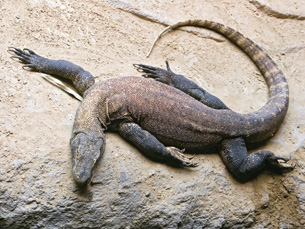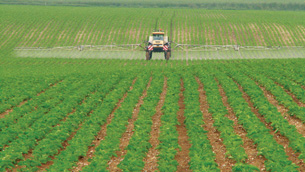Module 5
1. Module 5
1.31. Module Summary/Assessment
Module 5—Cell Division: The Processes of Mitosis and Meiosis
 Module Summary
Module Summary
In this module you were asked the following inquiry question:
How do cellular processes allow for growth, healing, and reproduction in supporting the survival of organisms?
In this module you examined cell growth, repair, and reproduction. By understanding the life cycle of your cells, you gained insight into how your own body renews itself over the course of your lifetime. You have studied the differences between combatting the signs of aging and actually keeping your cells in a healthy cell cycle of growth and repair. You can better understand how cancer can lead to serious health concerns and how various treatments show promise in combating this disease. You have examined emerging technologies involved in cell research and are better prepared to help society guide scientists in setting limits or guidelines for new research aimed at combating serious illness and disease.
To review and summarize the concepts of this module, you may wish to complete a concept organizer or mind map. When you began your study of this module, you may have saved a copy of this document when you encountered it in the Introduction to the Big Picture section, or you may download it now. It is an outline of the lessons, with the focusing questions for the lessons that you studied in this module. Use the focusing questions to fill in this framework with the ideas that you have mastered in each lesson and how these ideas help you answer the focusing questions. You can use keywords, point form, or any amount of detail that facilitates your needs. You may choose to work on your computer, to print the document and work from the hard copy, or to copy the outline onto a large poster-like sheet of paper to fill in your work. This is a great tool to review and to use for study purposes.
Before you begin the Module Assessment, you may choose to complete the review questions on pages 582 to 583 of your textbook for extra practice. Your teacher will help you with any questions that you might have and give you feedback on your responses.
Module Assessment
In this module you will examine normal growth, repair, and reproduction in cells and organisms. You will also look into exceptions to normal cellular patterns and evaluate their impact. When you have completed all of the lessons, you will need to complete one of the following Module Assessment tasks.

© Abramova Kseniya/shutterstock
Choice 1
You are a leading horse breeder, and you have recently invested in a prize-winning endurance performance stallion. You were looking forward to using him in your breeding program, but he developed testicular cancer and both of his testicles had to be removed. The loss is disastrous to your breeding program.
Not willing to give up, you begin investigating other ways you could carry on his genetics. You read about a sheep in England that has been cloned, and then you find a few other stories about livestock that have been successfully cloned. You decide you would like to try cloning, but you need to convince the other investors that this is a viable plan for developing horses for high-endurance racing.
Outline a proposal for how you intend to carry on the horse’s genetics. In a flow chart and illustrations, outline in detail the steps involved and explain any technologies you will need to use. Also, create a long-range plan. Will you continue to produce foals this way, or will you try a different method? Explain your reasoning.

© Milan Vasicek/shutterstock
Choice 2
In this module you saw examples of organisms that switch between sexual and asexual reproduction or use a method known as parthenogenesis. Choose one of these organisms that interests you or find another one that shows a unique alternating reproduction pattern. Create a short report or presentation introducing the organism. Explain its key adaptations and its usual habitat. In your work, include a flow chart with illustrations that explains each of the ways the organism reproduces and how these alternating cycles are related. Label where major events, such as mitosis, meiosis, and fertilization, take place in the life cycle. Also, discuss the reasons why the organism reproduces the way it does at each stage of its life cycle.
Choice 3

© Buquet/shutterstock
You are working for Greenpeace. A concern has been brought to your attention involving the increasing die-off of trout in a local freshwater lake. You are looking into the possibility of the problem originating in the food chain. You discover that trout feed on a microscopic organism called Daphnia, and that the population size of Daphnia is rapidly declining. You also discover traces of a pesticide in the lake. You have traced this pesticide back to a local farmer who had sprayed the pesticide, which has now seeped through the groundwater into the lake. The pesticide works by preventing the duplication of chromosomes. You will need to present your findings to a council at a town hall meeting. Your presentation must include an illustration of a general cell life cycle and a Daphnia life cycle. In addition, your report or presentation should address the following issues:
- Where in the cell cycle would this pesticide cause a problem?
- Where in the Daphnia life cycle do mitosis, meiosis, and fertilization occur?
- With reference to the diagram:
- discuss the roles and differences between mitosis and meiosis
- explain the effect of fertilization
- compare the consequences of pesticide exposure during the asexual phase and during the sexual phase of the Daphnia life cycle
Assessment Rubric for Students
Whichever assessment task you choose, you will be required to address four topics, each worth a total of 4 marks. Full marks will only be awarded when answers are complete and when correct biological vocabulary is used to present biological concepts. Each task has a total possible mark assessment of 16 marks. The topics choices are as follows:
Choice 1: Saving a Horse’s Genetics
Cloning Flow Chart
Technologies
Long-Range Plans
Presentation Quality
Choice 2: Alternation of Generations or Parthenogenesis
Reproduction Flow Chart
Advantages and Disadvantages of Reproductive Processes
Adaptations and Habitat
Presentation Quality
Choice 3: Alternation of Generations or Parthenogenesis
Daphnia Life Cycle
Advantages and Disadvantages of Reproductive Processes
Consequences of Pesticide Exposure
Presentation Quality
Marking Rubrics for Module 5 Assessment
Choice 1: Saving a Horse's Genetics
|
4 marks |
3 marks |
2 marks |
1 marks |
0 marks |
Cloning Flow Chart |
All steps are correct, labelled, and linked together in correct order using arrows, and/or symbols to create a proper flow chart. |
Nuclear transplant from somatic cell to enucleated egg cell labelled and shown as a flow chart, but there are minor errors in the process. |
All the steps are outlined or explained, but are not joined or outlined as a proper flow chart. |
An attempt is made to illustrate cloning in a flow chart or to explain the process with words. |
No clear indication is given that the student understands cloning. |
Technologies |
Surgical techniques to harvest cells, microscope guidance for nuclear transplant, application of electrical current to fuse nucleolus and stimulate cell division, and hormonal treatments to the surrogate mother for implantation are described. |
Two of the four technologies are described. |
One of the four technologies is described. |
Procedures are discussed or technologies are implied. |
There is no mention of technologies in the presentation. |
Long-Range Plans |
Plan explains how, upon birth of a male, breeding should revert back to normal means. |
Plan mentions how, after cloning, the offspring can be used as breeding stock. |
Plan explains how cloning could be continued for little cost. |
Plan mentions cloning will be continued. |
No mention of a long-range plan is given. |
Presentation Quality |
Presentation is clear, organized, and creative. |
Presentation is clear and organized. |
Presentation is understandable. |
Presentation is not clear or not organized. |
Presentation is not clear and is disorganized. |
Choice 2: Alternation of Generations or Parthenogenesis
|
4 marks |
3 marks |
2 marks |
1 marks |
0 marks |
Reproduction Flow Chart |
All steps are correct, labelled, and linked together in correct order using arrows, and/ or symbols to create a proper flow chart. |
Different stages in the life cycle are clearly identified, and mitosis and meiosis are correctly indicated. |
Different stages in the life cycle are clearly identified, and mitosis or meiosis are correctly indicated or ploidy count is correctly given. |
An attempt is given that illustrates a reproductive cycle. |
No clear indication is given that the student understands a reproductive cycle. |
Advantages and Disadvantages of Reproductive Processes |
A and D of meiosis, fertilization, and mitosis are correctly explained in context of this organism. |
A and D of meiosis, fertilization, and mitosis are correctly explained. |
Some of the A and D of meiosis, fertilization, and mitosis are listed. |
Some of the A and D of meiosis and fertilization, or mitosis are listed. |
No mention of advantages or disadvantages are given. |
Adaptations and Habitat |
Three adaptations and how they support the organism in its habitat are explained. |
Three or more adaptations are listed, and the habitat is outlined. |
Two adaptations are listed, and the habitat is outlined. |
One adaptation is listed or the habitat is outlined. |
Nothing is given about adaptations or habitat. |
Presentation Quality |
Presentation is clear, organized, and creative. |
Presentation is clear and organized. |
Presentation is understandable. |
Presentation is not clear or not organized. |
Presentation is not clear and is disorganized. |
Choice 3: Alternation of Generations or Parthenogenesis
4 marks |
3 marks |
2 marks |
1 marks |
0 marks |
|
Daphnia Life Cycle |
All steps are correct, labelled, and linked together in correct order using arrows, and/ or symbols to create a proper flow chart. |
Different stages in the life cycle are clearly identified, and mitosis and meiosis are correctly indicated. |
Different stages in the life cycle are clearly identified, and mitosis or meiosis are correctly indicated or ploidy count is correctly given. |
An attempt is given that illustrates a reproductive cycle. |
No clear indication is given that the student understands a reproductive cycle. |
Advantages and Disadvantages of Reproductive Processes |
A and D of meiosis, fertilization, and mitosis are correctly explained in context of this organism. |
A and D of meiosis, fertilization, and mitosis are correctly explained. |
Some of the A and D of meiosis, fertilization, and mitosis are listed. |
Some of the A and D of meiosis, fertilization, or mitosis are listed. |
No mention of advantages or disadvantages are given. |
Consequences of Pesticide Exposure |
Effects on both meiosis and mitosis are explained and compared with each other. |
Effects on both meiosis and mitosis are explained. |
Effects on either meiosis or mitosis are explained. |
Effects for either meiosis or mitosis are listed. |
Nothing is given about adaptations or habitat. |
Presentation Quality |
Presentation is clear, organized, and creative. |
Presentation is clear and organized. |
Presentation is understandable. |
Presentation is not clear or not organized. |
Presentation is not clear and is disorganized. |